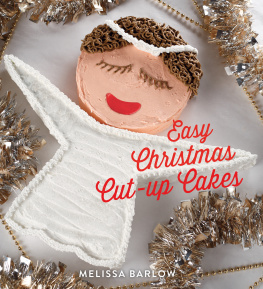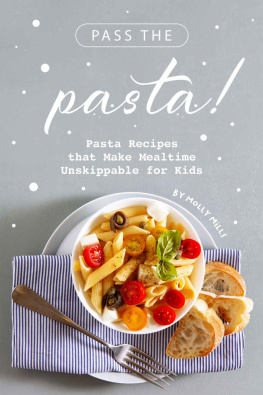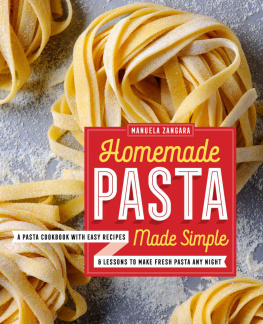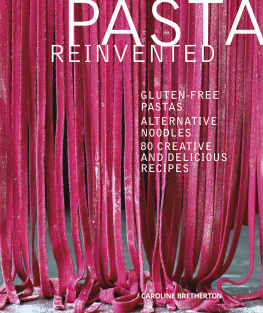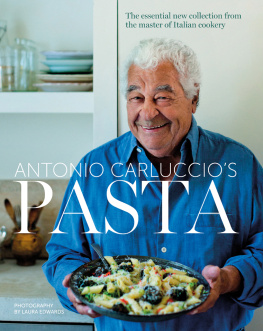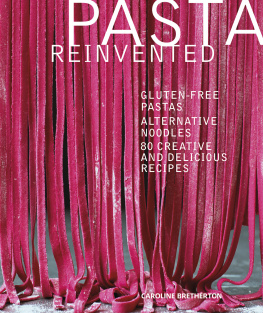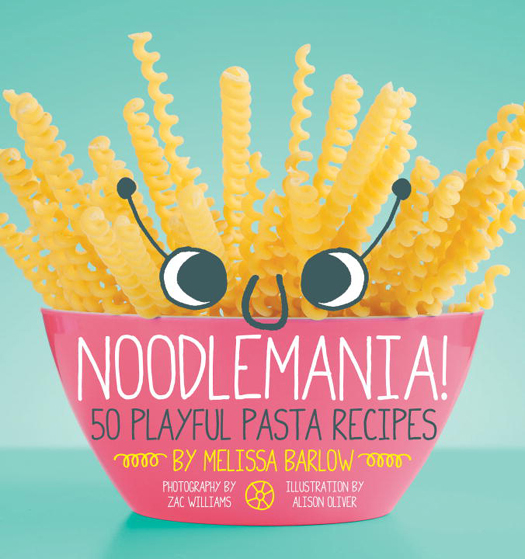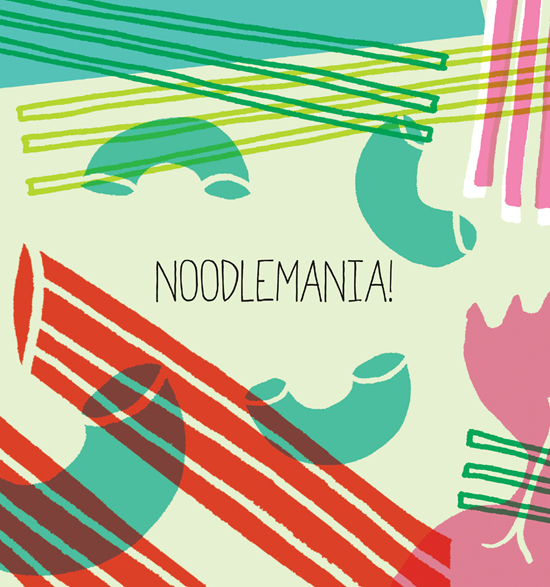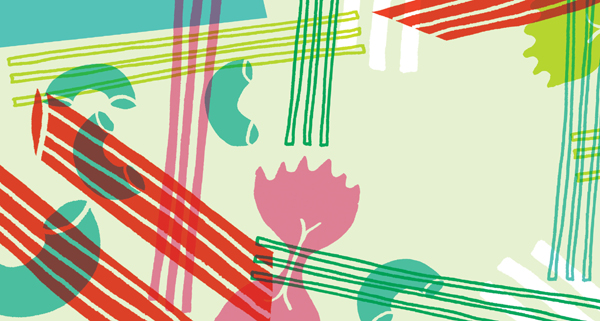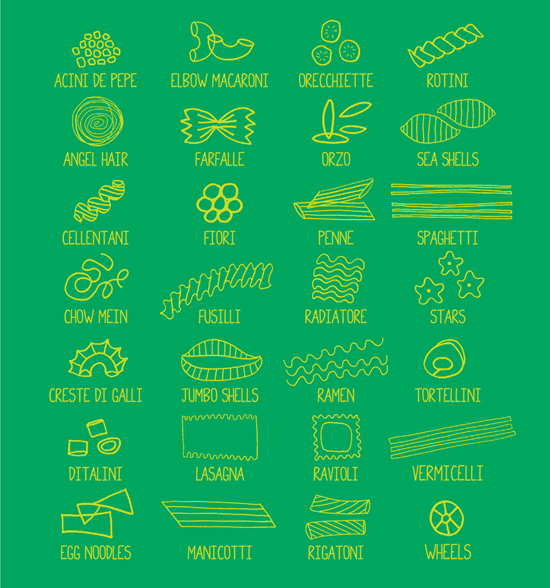2013 by Melissa Barlow
All rights reserved. No part of this book may be reproduced in any form without written permission from the publisher. Library of Congress Cataloging in Publication Number: 2012934521
eISBN: 978-1-59474-669-7
Production management by John J. McGurk
Disclaimer: The recipes in this book involve the use of sharp knives, the stovetop, and an oven. Children should be careful when preparing, cooking, and bakingadult supervision and guidance is highly recommended. The author and publisher disclaim all responsibility for any injury resulting from making the recipes in this book.
Quirk Books
215 Church St.
Philadelphia, PA 19106
quirkbooks.com
v3.1
Welcome to Noodlemania! Inside this fun and instructive cookbook, you will find 50 playful pasta recipes, along with neat math facts, cooking tips, and pasta trivia. Lets get cookin!
NOODLES! NOODLES! NOODLES!
Noodles are a food staple all over the world. They come in hundreds of different shapes and sizes. Did you know that different shapes and types of noodles come from different parts of the world? There are even different colors of noodles. The regular yellowish noodles you see all the time are made with flour, eggs, and water. If you see green noodles, they usually have a little spinach added to them. Orangey-red noodles have tomatoes in them.
Once the dough is made for a noodle, it is rolled out and cut into shapes. The best part about noodles is that they are so easy to prepare. Just boil some water, add a little salt, and drop in your pasta. Voil! Dinner is done.
PASTA TRIVIA: The first industrial pasta factory in the United States was built in Brooklyn in 1848 by a Frenchman. He spread his spaghetti strands on the roof to dry in the sunshine!
PERFECTLY COOKED NOODLES
Before you start cooking, make sure to ask permission from a parent or other responsible adult. That way, if you need help or have a question, they can be there to lend a hand.
Now, lets get down to business. When you are ready to start cooking, make sure to follow these tips and your noodles will turn out perfectly every time.
1. Always follow the cooking directions on the pasta package. Different shapes and sizes of noodles have different cooking times, so pay careful attention to the instructions.
2. Use cold water when filling the pot to cook the noodles, and make sure your pot is big enough. If the pot is too small, the noodles wont have room to move around when they are cooking and they will stick together.
3. Set your pot on the stovetop and turn the heat to medium-high. To help the water boil faster, cover the pot with a lid. Once the water boils, add salt as directed on your noodle package. Salt makes your noodles taste good, so dont forget to add it.
4. Add the pasta all at once and stir it every couple of minutes to prevent it from clumping together. Cook it, uncovered, according to the time on the noodle package. For a firmer noodle, called al dente, cook the noodles to the lower end of the suggested cooking time. For extra-tender and soft noodles, cook the noodles for the maximum cooking time. Just dont overcook them or they will become mushy.
5. Once your noodles are done cooking, drain them in a colander. Only rinse the noodles if a recipe tells you toit is usually done just for cold dishes. If the noodles stick together after theyve cooled, you can rinse them quickly in water and then carefully break them apart with your fingers so they are easier to work with.
NOODLES COOKED AL DENTE (PRONOUNCED al-DEN-tay) literally means to the tooth. This means the pasta should be slightly firm, with a little bit of bite to the tooth, but still tender.
This book includes vegetables that will need to be washed and cut up for many of the recipes, and meat that will need to be cooked in addition to all of the cooked noodles. Remember to be very careful when using knives, and make sure to let your adult helper know what you are doing. Also remember to wash your hands before you start cooking and again after handling any sort of meat so that you dont contaminate other food items. And above all, remember that things get hot when you are cooking in the kitchen, so be careful!
TYPES OF NOODLES
Noodles come in strings, ribbons, twists, curls, tubes, flowers, shells, bow-ties, letters, circles, elbows, and much, much more! You can find many types of noodles at the grocery store or online. You can also buy different colors of pasta, or you can dye them yourself.
To dye your noodles, all you need is liquid food coloring. Just add the food coloring to the water before bringing it to a boil. If you boil the noodles in the water, the result is colorful noodles! The more food coloring you add, the brighter the color will turn out, especially for dark colors like blue, red, or purple. A good rule of thumb is 8 to 10 drops of food coloring. If you want your food to be even brighter, add 1 to 2 tablespoons of vinegar to the boiling water.
On the opposite page is a list of pastas called for to make the recipes in Noodlemania! If you dont have the type of pasta called for in a recipe, try one from the substitution chart on .
NOODLES YOUR WAY
The great thing about noodle recipes is that they are easy to mix and match. If a recipe calls for a vegetable or cheese you dont like, use one that you do like. If you dont like broccoli but you love peas, try the peas instead. If you dont like Parmesan cheese, try mozzarella. You can make your noodles however you think youd like them best.
Now, lets wash our hands and start using our noodles!



